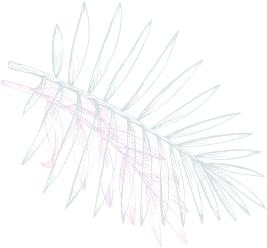

March 4, 2020
By James Rampton - Read the full feature at:
You are greeted at the door of the Salinda Resort on the gorgeous Vietnamese island of Phu Quoc by the smiling manager offering you a quartet of shot glasses containing chilled local drinks: hibiscus and beetroot, ginger, lemongrass and matcha.
Next up, you are served a plate of a dozen mouth-watering amuse-bouches. Mine disappear faster than you can say, “Welcome to Vietnam”.
This greeting is typical of the impeccable standard of service at the family-run Salinda. To underline the point, after the airline has contrived to lose my luggage on the way to Phu Quoc, I arrive at the hotel with just the clothes I’m standing in.
As if by magic, the aforementioned manager appears by my side at breakfast the next morning bearing two new complimentary sets of clothes from the hotel shop.
On another occasion, I am unable to see the screen of an ATM because of the sun’s glare. Unprompted, the hotel driver leaps out of his car and shields the screen with an umbrella.
This level of service puts you at ease. If you’ve come to relax, you’ve come to the right place.
The Salinda has its own spa, art gallery, kids’ club, pool room and karaoke suite. It even boasts the only cigar room on the 543-sq km island.
It also offers three outstanding restaurants, a Vietnamese (the Salinda), an Italian (Il Muro) and an Indian (Pakka). I thoroughly recommend trying the wondrous seafood platter at the Salinda Restaurant
The Salinda – the name is an elision of the names of the owner’s two daughters, Sandra and Linda – enjoys a picturesque, tranquil setting by the sea.
Flanked by palm trees and a very good bar, an infinity pool looks on to a photogenic beach and crystal-clear blue water, which remains at a pleasant 24 degrees all year round.
With a sundowner in one hand and a camera in the other, the western-facing beach is the ideal place to observe the stunning “purple sunsets”.
In addition, the Salinda boasts a terrific range of activities, from a moonlight beach barbeque and Latin, Retro and Movie Music nights performed by an excellent live band in the High Note Bar to sunrise yoga in the Mango Garden and classes teaching how to make the herbal compresses used in Thai healing therapy for more than 400 years.
But, beyond the Salinda, just a five-minute drive from the airport, there’s much to relish on Phu Quoc, an idyllic and verdant island with the cleanest air in Vietnam.
For example, we visit Ham Ninh, a traditional fishing village on the eastern side of the island, 10 kilometres from the Salinda.
Down a kilometre-long causeway stretching into the azure sea, fishermen are selling all manner of live marine life from bubbling tanks.
I gingerly fish a crab out of a tank, a fisherman scurries off to cook it and, within five minutes – with the aid of a nut-cracker – I am consuming the most delicious seafood.
Also highly recommended is the Hon Thom Nature Park off the southern tip of Phu Quoc, 25 kilometres from the Salinda.
We hop on to the world’s longest over-sea cable-car, which stretches 8km from An Thoi to Hon Thom Island, and take in the spectacular view of a flotilla of fishing boats gliding around the archipelago.
There, we leap into a speedboat and motor around the nearby islands. We stop at Fingernail Island for some snorkelling and a delicious barbeque lunch on the palm-fringed beach. I feel like the star of my own personal James Bond film.
It is easy to understand why Vietnam is becoming an increasingly popular destination.
Phu Quoc was once employed as a prison island, housing 70,000 inmates. But now it is an island anyone would be delighted to visit.
In Vietnamese, Phu Quoc means “Rich Land”. You can see why. The island is rich beyond our wildest dreams in cuisine, culture, coastline, countryside and, above all, charm.
P.S. The gardens at the Salinda Resort are well worth exploring. They boast 98 different plant species. Look out for the Cannonball Tree. According to religious texts, Buddha was born under this tree. Now its cannonball-like flowers are said to represent Enlightenment and are used as offerings at temples.
lllflff